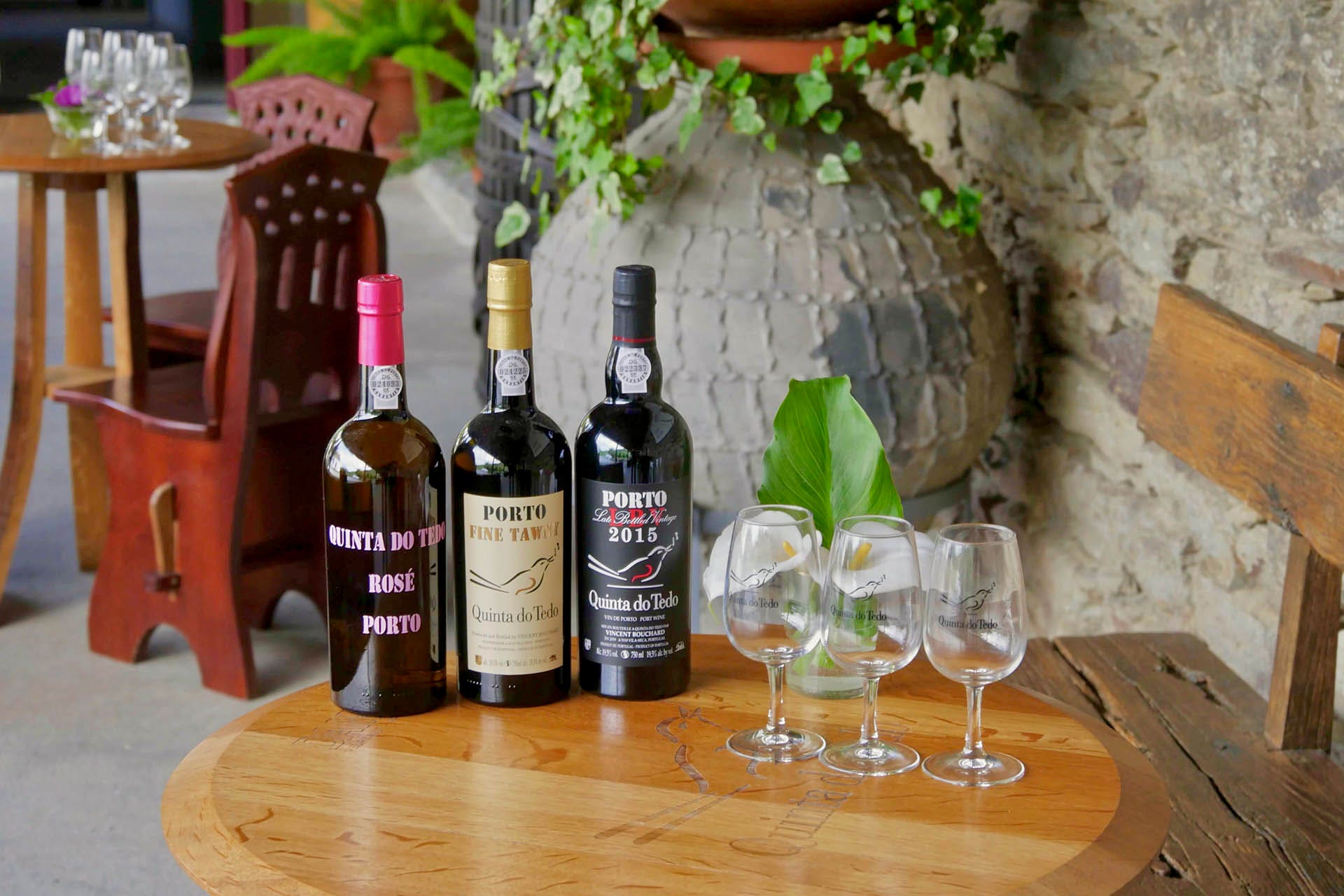On its face, the difference between vintage and nonvintage wines is simple. Vintage wines are made from grapes harvested during a single growing season, while nonvintage wines can blend a few different harvests. In most parts of the wine world, the vintage year written on the label is just facts: It lets you know the year those grapes in your bottle of Bordeaux or Ribera del Duero were harvested.
Granted, vintage variation keeps things interesting. Due to climatic conditions, some years produce wines that are considered better than others.
But there’s much more to understanding vintage when it comes to Port and Champagne.

What is a Nonvintage Wine?
Unlike other wine regions, the vast majority of the Port and Champagne made each year is nonvintage. Wineries like Champagne Marie Césaire and Quinta do Tedo blend batches from multiple vintages to create bottles with a consistent house style, year after year.
“Every year we have to reproduce this blend of three harvests, and it’s our winemaker who’s just phenomenal to arrive at the same flavor,” says Kay Bouchard, whose family makes Quinta do Tedo ruby and tawny Ports in Portugal’s Douro Valley. About 98% of the total Port production released each year is nonvintage, she says.
In Champagne, nonvintage (NV) brut Champagne is the region’s bread-and-butter wine, comprising 95% of annual production. Molly Brooks, a buyer at Meritage Wine Market in Encinitas, California, says that blending different years’ wines makes sense in a place like Champagne, where weather conditions can be cold and uneven. Late frosts and rain can mean that yields of Chardonnay, Pinot Noir and other classic Champagne grapes might be non-existent or very low some years, she says.
“The idea is to be able to have a consistent house style rather than a style of vintage, because there are so many vintages that just don’t produce,” says Brooks.

Such was the case in 2021. According to the Comité Champagne, 40% of the crop was lost due a triple whammy of frost, rain and hail.
Industries that rely on the weather to be profitable often need a backup plan, and that’s exactly what nonvintage wines are.
“If you’re blending for a Port or Champagne, you’re pulling from different years and different cuvées to come up with that perfect wine,” says Jennifer Huether, a Master Sommelier based in Toronto. “You’re not just at the hands of what Mother Nature gave you. By blending different vintages and grape varieties, you’re covering your ass more.”
Vintage Wines in Port and Champagne
In both Portugal and Champagne, if a winery owner decides that the fruit from that harvest is so exceptional that it should shine solo in a wine, they will declare a vintage. It’s an individual decision, but, for the vintage to catch on with consumers, the majority of wineries in the area usually have to agree. This occurs with varying frequency, perhaps once or twice a decade.
“A vintage Port is the King of Ports made only in excellent years,” says Bouchard.
The three styles of vintage Ports have varied aging requirements. Entry-level vintage Ports are aged three years or less, Late Bottled Vintage (LBV) is aged up to four years, and a Colheita must age for seven years. Once the vintage is declared, the Port Wine Institute tastes and verifies that the wines match their designation.
Vintage wines are made from grapes harvested during a single growing season, while nonvintage wines can blend a few different harvests.
In France, under Appellation d’Origine Contrôlée (AOC) rules, vintage Champagnes must be aged for three years. More than twice the required aging time for NV Champagne, those additional years on the yeast is said to add complexity and texture.
As a result of these additional requirements, vintage Champagne and Port are often considered more rarified than their nonvintage brethren. And the vintage wines often have elevated prices to match.
“When I look at those two regions and think of multivintage, I think of those wines as everyday wines,” says Huether. “When I look at a single vintage, I think of a special occasion.”

The question of whether a vintage or nonvintage wine is better, however, ultimately comes down to taste. Brooks believes that many people are perfectly happy with the fresher flavors of nonvintage Champagne, but might look for Ports from significant years like theirs or a child’s birth year.
For Bouchard, the choice between vintage versus nonvintage wines is all about what she’s eating. She might pair younger tawny and ruby Ports with fruit and chocolate, respectively, she says, while vintage ones are better with more subtle combinations of cheese and fruit.
“Pairing is key,” she says. “There’s a perfect Port for every occasion.”
Last Updated: September 28, 2022















